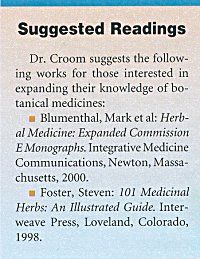Standards Needed for Production of Herb-Based Medicines
PHILADELPHIA-Better standards of production are needed for herb-based medicines, says a scientist who helped develop a method of harvesting paclitaxel (Taxol) from yew tree needles.
PHILADELPHIABetter standards of production are needed for herb-based medicines, says a scientist who helped develop a method of harvesting paclitaxel (Taxol) from yew tree needles.
Speaking at the annual meeting of the Society for Nutritional Oncology Adjuvant Therapy, Edward M. Croom, Jr., PhD, a pharmacognosistan expert in identifying and cultivating plants for medicinesaid that he would never consume such things as a cut-rate bottle of St. Johns wort from the local discount drug store. I cannot imagine what floor sweepings might be in there, he said.
There are many details to be mastered in the preparation of herb-based medicines, according to Dr. Croom, scientific and regulatory affairs manager, Indena, USA East, Inc. (Paramus, NJ), a company specializing in the production of botanical derivatives.
Before joining Indena, Dr. Croom was associate professor of pharmacognosy, University of Mississippi School of Pharmacy, and research associate professor at the pharmacy schools National Center for the Development of Natural Products. He learned much of what he knows from Native Americans and others in the backwoods of Mississippi, he said.
There was always a process. You had to know which plant to use, where it came from, how to collect it, and if you dried it, how to dry it, how to house it, how long it could be stored, how long to cook it, and how much of it to take, and for that reason he advocates universal standards for botanical products.
In the past, people actually had permits to collect certain plants. Today, we dont certify the collector, but we should. We need people who know the plants they are collecting. Plant quality and identity start in the field. It doesnt start in the extract, he said.
Dr. Croom worked for 6 years on developing supplies of paclitaxel. When I came in, they we getting it from the bark, and they were destroying old growth trees. It was a nonsustainable supply, and I said this wont do.
He found that the paclitaxel content could be extracted from the needles of yew trees grown in nurseries, and that drying the intact needles preserved the paclitaxel.
The real key was to find the right plant materialthe needlesand to dry them properly. This was my simple finding, and these clippings are now being used in producing paclitaxel, he said.
Dr. Croom and his colleagues also did storage experiments. We refrigerated the paclitaxel to show you could run a factory for months and still have plenty of material, he said. We had to gather 100,000 pounds of material for a pilot study to prove the feasibility.
He cited echinacea to show what happens when herbal supplement manufacturers do not know enough about plants. Because of poor plant identification practices, the echinacea that is picked for supplements is often not the right variety or part. The different species, plant parts, and dosage forms each have different characteristics, he said.
Useful Herbs
There are several botanical products that if made to the proper standards are useful in certain settings, if not contraindicated, he said, St. Johns wort, slippery elm, garlic supplements, Asian ginseng, and saw palmetto among them.
Epidemiologic data and studies of garlics physiologic activity, he said, suggest that garlic supplements may have a modest effect on blood lipids and, therefore, may be a rational supplement for maintaining cardiovascular health. For prevention of gastric cancer, the best data available suggests that garlic be taken as a food, he cautioned.

Saw Palmetto
The saw palmetto plant (Serenoa repens) has no known effect on prostate cancer prevention, Dr. Croom said. But standardized extracts of the herb in clinical trials for up to 3 years have shown significant reduction in symptoms of benign prostatic hyperplasia, including nocturia, residual urine volume, and urine flow.
Some clinical trials have shown less significant side effects for saw palmetto than common prescription drugs for benign prostatic hyperplasia, he said, but he warned that while using saw palmetto to relieve the symptoms of an enlarged prostate, patients should also have their physician regularly check their prostate status, including PSA testing.
For now, much research remains to be done on herbal products, Dr. Croom acknowledged. We dont have all the answers, he said. There are herbs that I wouldnt feed my dog.